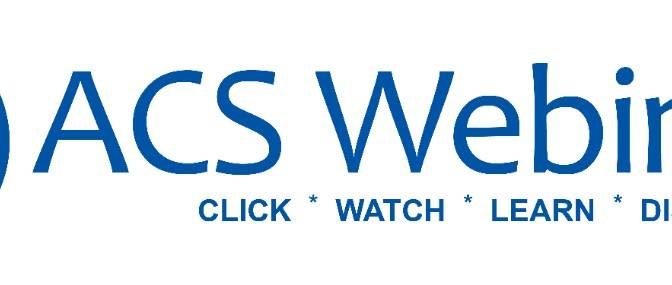There were 9 general lab safety topics raised by the audience.
These answers are Ralph Stuart’s; feel free to share your thoughts and follow up questions in the comments section below. (Note: the comments section is moderated, so there may be some time delay before your question shows up.)
Can you talk more about the safety & health issues in the laboratory? Specifically, what are the general policies for the hazards of broken glassware and dealing with students cut by broken glassware?
General laboratory safety issues, as well as glassware specifically are well covered by the ACS publication Safety in the Academic Laboratory. A reminder: Remember to check with the host institution for its protocols related to providing first aid before lab work starts, as glass cuts are one of the most common laboratory injuries.
How do I access or subscribe to the Journal of Chemical Health and Safety?
The Journal of Chemical Health and Safety (this link will take you to the Journal’s web site) is a member benefit of the Division of Chemical Health and Safety and is also available in many academic libraries.
I am most concerned about the Risks (vs Hazard) within chemical reactions.
This is an important point. The risks associated with a chemical reaction are often not clear from a review of the Safety Data Sheets for individual chemicals, so further safety analysis of the process as a whole is necessary. This issue was identified by the Chemical Safety Board’s 2011 report and the ACS is working hard to support this process with the technical resources outlined in the webinar.
Two related questions:
- Another thought is treating students like workers and getting them OSHA protection – never saw this in my time in academia, but in industry, I got a benign chemical splash between glove and coat and the reporting on that went on for 12 months and involved a lot of discussion and meetings around chemical practices
- In 2003, U. Iowa Dept. Chemistry had an explosion from one of the grad students running a solvent still, where he was burned (3rd degree) and hospitalized. There was a lot of controversy afterwards, because the university did not intend to cover medical bills, stating that student insurance did not cover graduate teaching assistants that were involved in lab research (only graduate research assistants were covered). Eventually the student union became involved and this was resolved. However, does this continue to be an issue in academia? With respect to hazards for graduate/undergraduate research, has there been any legislation to cover students injured in an accident by workers comp/disability?
The academic laboratory is an interesting challenge in this respect. Traditionally, higher education has been what the former head of OSHA, among others, has referred to as a “fissured workplace”. This phrase describes workplaces in which employees and students work together under a wide variety of institutional relationships (e.g. full time employees, visiting scholars, tuition-paying students, volunteers, etc.). This situation presents an interesting challenge to developing and sustaining an active laboratory safety culture because the legal requirements applicable to each group will vary depending on their status and the legal jurisdiction that applies.
Do you follow OSHA 1910. 1450 requirements?
This question refers to the OSHA Lab Standard found here. This question is answered on an institution-by-institution basis. We have a Chemical Hygiene Plan at Keene State and the University of Cincinnati.
How do you apply process safety management principles in the research lab environment?
This issue is well explored by a 2009 article in the Journal of Chemical Health and Safety by Neal Langerman entitled Lab-scale process safety management. Dr. Langerman expanded on this article in a 2015 JCHAS column entitled Expand Process Safety Management
Can you explain Control Banding, and how effective it is?
Control banding is an area of active research in laboratory safety profession. The concept is to address control of laboratory hazards for a group of chemicals, rather than a process-by-process basis, in a more general way than allowed by tools such as a Job Hazard Analysis. However, control banding is complicated by the variety of physical and health hazards associated with chemical processes used in the research setting. To be effective and sustainable, an ANSI Z10 style Management System should be developed to support the control banding process.
Can we design our safety assessment checklist or we have to follow yours?
It is best practice for checklists to be as specific as possible to the laboratories that use them. General guidance for the best use of checklists can be found on the ACS hazard assessment web site here.
Any feedback from educators and researchers about the ACS Hazard Assessment webpage and tools?
The tool is still new to the world (it was released on the web in 2016), so Kendra’s case study of its use is one of the earliest we in ACS have found. We are very interested in other feedback on the tool; e-mail safety@acs.org to provide your comments.
